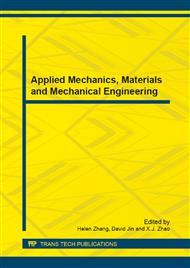[1]
Lockman PR, Oyewumi MO, Koziara JM, , et al. Brain uptake of thiamine coated nanoparticles. J Control Release, 2003, 93: 271~282.
DOI: 10.1016/j.jconrel.2003.08.006
Google Scholar
[2]
Dobrovolskaia MA, Mcneil SE. Immunological properties of engineered nanomaterials. Nat Nanotechnol, 2007, 2: 469~478.
Google Scholar
[3]
Drexler, K. Eric. Nanosystems: Molecular Machinery, Manufacturing, and Computatin. New York: John Wiley & Sons. (1992).
Google Scholar
[4]
T. Thomas, K. Thomas, etc. Research Strategies for Safety Evaluation of Nanomaterials, Part VII: Evaluating Consumer Exposure to Nanoscale Materials. TOXICOLOGICAL SCIENCES. 2006, 91(1): 14–19.
DOI: 10.1093/toxsci/kfj129
Google Scholar
[5]
T. W. Chou, L. Gao, E. T. Thostenson, Z. Zhang, J. H. Byun, Compos. Sci. Technol. 2010: 70, 1.
Google Scholar
[6]
H. G. Chae, Y. H. Choi, M. L. Minus, S. Kumar, Compos. Sci. Technol. 2009, 69, 406.
Google Scholar
[7]
Zhen WJ. Study on Nanocellulose/Starch Composites. In: YW. Wu, ed. Advanced Materials Research. 2011, 187: 544-547.
DOI: 10.4028/www.scientific.net/amr.187.544
Google Scholar
[8]
Fenart L, Casanova A, Dehouck B, , et al. Evaluation of effect of charge and lipid coating on ability of 60nm nanoparticles to cross an in vitro model of the blood-brain barrier. J Pharmacol Exp Ther, 1999, 291(3): 1017~1022.
Google Scholar
[9]
Byrne JD, Betancourt T, Brannon-Peppas L. Active targeting schemes for nanoparticle systems in E. Roduner, Chem. Soc. 2006, 35: 583.
Google Scholar
[10]
Cancer therapeutics. Adv Drug Deliv Rev, 2008, 60: 1615~1626.
Google Scholar
[11]
Huang XL, Teng X, Chen D, Tang F, He J. The effect of the shape of mesoporous silica nanoparticles on cellular uptake and cell function. Biomaterials, 2010, 31: 438~448.
DOI: 10.1016/j.biomaterials.2009.09.060
Google Scholar


